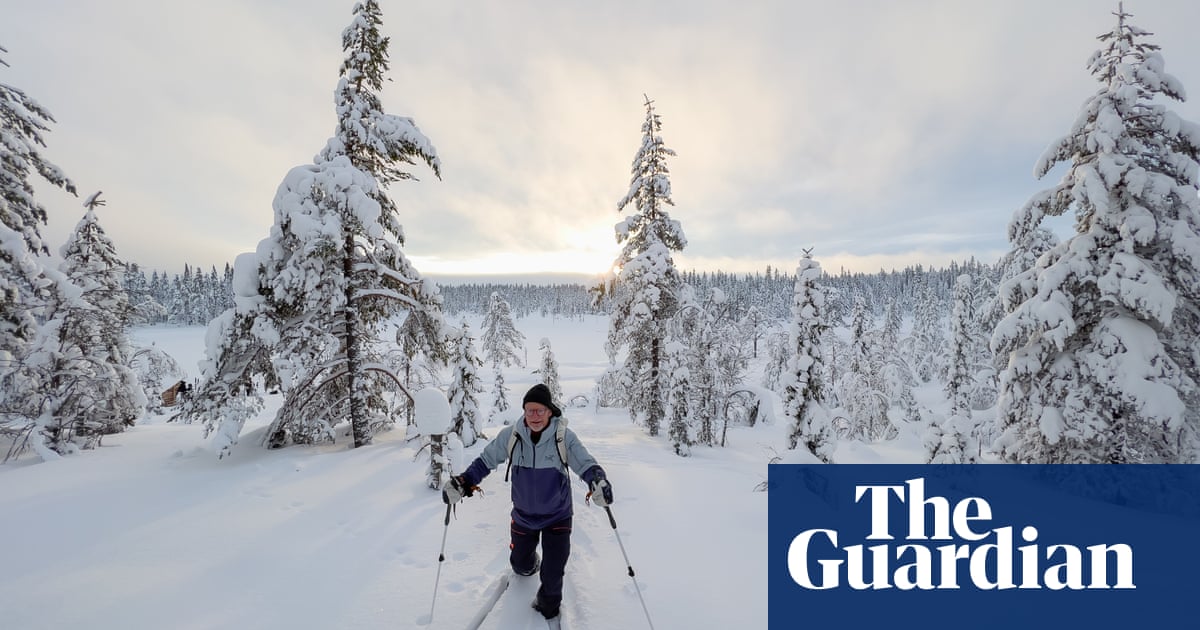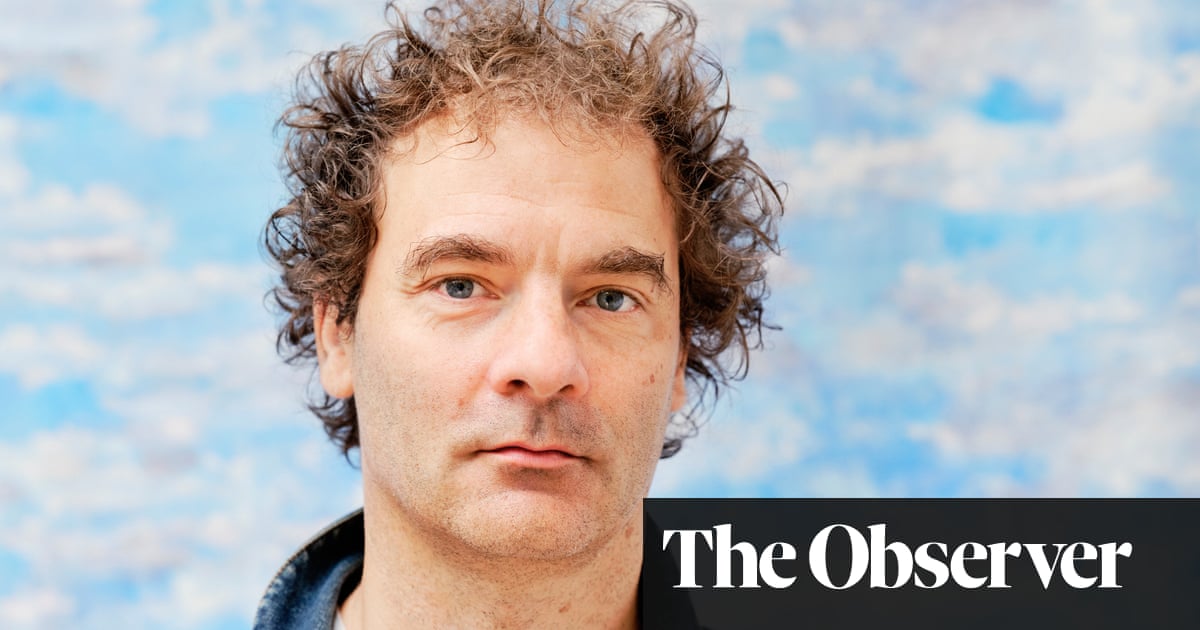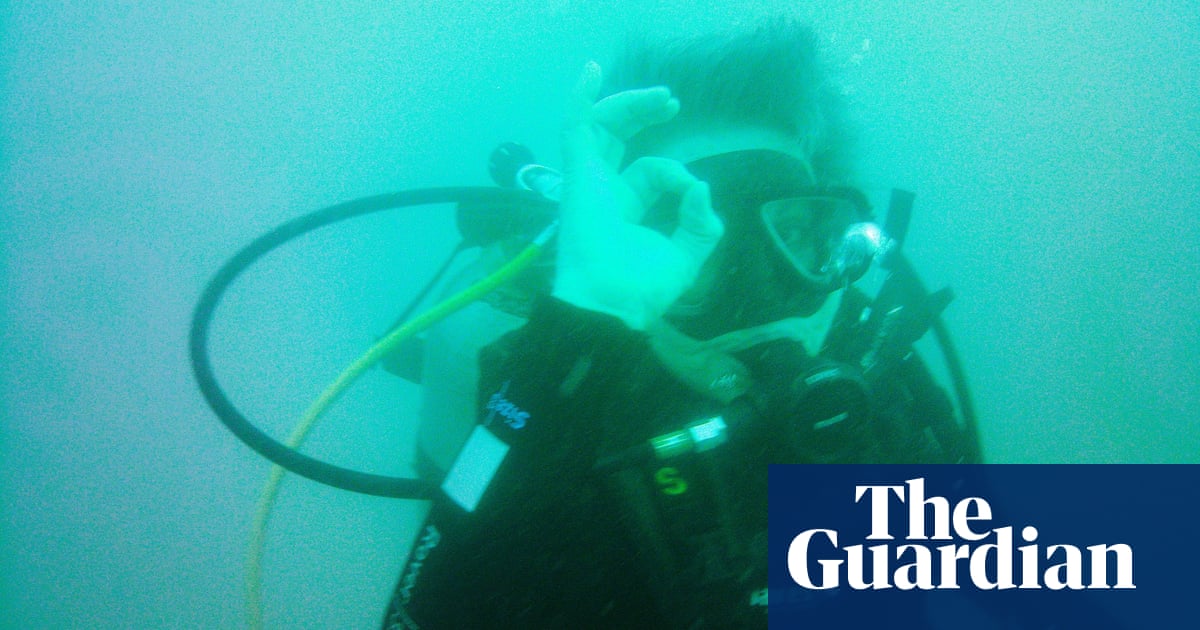
One British childhood winter experience remains the same, despite all the changes of the past century. It’s the one where you gaze out of the window, mesmerised by the falling snow, and start fantasising about building an igloo or a snow cave, then sleeping in it overnight. A few fortunate kids get to follow that up, but for most the fantasy is quickly quashed. The blizzard stops, the snow melts, you lob some slush at your mates then go inside to watch Ski Sunday.
Even on ski trips later in life, I discovered, childish and playful ambitions don’t get much of a look-in. It was only when I was on a summer kayak expedition in Sweden’s Saint Anna archipelago and chatted to local chef and guide Helena Hjort that I discovered other people have similar fantasies. “We started our business because we wanted to make trips that are like going away with a gang of friends,” says Helena, who runs Do the North with her old schoolmate Thomas Ohlander. “We kayak to islands where we camp – that’s our summer fun. But a night in a homemade snow cave is on the list.”
Four years and one pandemic later, Helena and Thomas get in touch. They have found a good location and done some trial runs. The night in a snow cave is a possibility. “We can’t guarantee it,” Thomas warns. “I mean, the weather and snow conditions have to be right, but we take tents and there are mountain huts in case. Meet me in the car park outside Mora station.”
During the journey up through Sweden I stop off at an underground sauna in Tuna-Hästberg, 150 miles north-west of Stockholm. This astonishing project was also started by a gang of friends looking for adventure: five teenage schoolboys who climbed a fence and began exploring an abandoned iron ore mine.
Over the years, their adventure became official: they added stairs, zipwires, tunnels, bridges, a via ferrata. It became a magical labyrinth that never lost touch with the gritty side of caving. “When we introduced cave diving,” says Dan Karlsson, one of the original five friends, “we soon realised that a sauna was essential.”
That’s how I find myself basking in 60C heat interspersed with plunges into freezing water. It’s shockingly enjoyable. They plan to open a hotel room down there too. We climb out into a snowy forest, passing animal tracks. “It’s a mother lynx and her cub who live in the mine, too,” says Dan.
A day later I meet Thomas and fellow guide Rob McNamee in the station car park at Mora, two hours north of Tuna-Hästberg.
We drive to our base, an off-grid log cabin in woods beside a frozen lake. As we arrive, the van’s temperature gauge hits -27.5C, a fraction colder than the UK record, registered at Braemar in the Cairngorms in 1895 and 1982, and again at Altnaharra, also in the Scottish Highlands, in 1995. It’s the sort of cold that chills the eyeballs. You hear it in the crisp crunch underfoot and the silent roar of the snow-bound forest.
I walk up to the cabin, wondering if I will achieve my goal of a night out in a snow hole. I cannot imagine even 10 minutes at this temperature. Fortunately, all the right gear is provided. Thomas chats to me from somewhere inside the hood of an immense down jacket. “It’s winter and we have to be adaptable. Itineraries are flexible.”
“But I will sleep in a snow hole, won’t I?”
He waves an impressively huge mitten. “I hope so. The wind is the main factor. We need to get on the Fulufjället plateau next to the Norwegian border. On the escarpments up there, deep snow gathers, but we have to pull sleds uphill and the wind can be strong. It will also depend on the group and how the winter skills training goes.”
The main cabin is an idyllic mix of rugs and old furniture with log burners that we feed constantly, fetching firewood from stores in the forest. Everyone is busy. People drop into roles: assistant cook, sturdy trailblazer and sensible sage. Each of them looks very capable: they are downhill skiers, marathon runners and ultra-swimmers.
I can fetch firewood. I grab a sledge and head down to the sauna cabin by the frozen lake. On the way I slip and twist my ankle. At least there is plenty of ice to take the heat out of it. I pray my role is not to be the weakest link.
Over the next couple of days, I develop a healthy respect for Thomas and Rob and the way they bring our snow skills up to speed. Day one is a short cross-country ski session around the lake, then a snowshoe yomp up the hill, from which I absent myself. The ankle tendon is red hot. A cold beer bottle pressed against it seems to help.
Day two is a longer ski journey through a vast frozen forest, where pines laden with snow take on human shapes: the giant, the bodybuilder and the boxer. I roll my sock down low to force the stiff ski boot open. Thomas waits patiently for me as we lag far behind, pointing out the wolverine and snow hare tracks. This session is followed by a lesson in how to erect a tent in a blizzard.
The learning comes thick and fast. Never remove your skis (you will instantly flounder). Dig in the pegs like this. Dig a hole inside the porch. Cover your boots at night, lest they freeze solid. And most of all, don’t sweat. It’s the secret of all polar expeditions. No sweat. Once you sweat, your inner clothing becomes wet. If you remove outer layers, ice crystals form and the body tries to melt the ice, sending body temperature plummeting. That makes you add layers, trapping the moisture that now enters a downward spiral of freeze-melt-freeze. Even thinking about it makes me sweat.
That evening we are introduced to our sleds: beautifully restored wooden sledges, some almost a century old. “The new ones are lighter,” says Thomas, “but these are stronger and run better.” Kit is distributed: cookers, pots, polar sleeping bags, down-filled inflatable air beds, water bottles strapped up with tape. “At -30C, your fingers stick to aluminium.” There is nothing like the threat of extreme cold to create a feverish atmosphere. No one has done anything like this before. The equipment is extraordinary and inspires confidence, as do our guides.
Next morning, the air outside feels different. The temperature has soared, to zero. Snow is sliding off the trees. But when we reach the start point, it has dropped to -8C, which is good, Rob assures me: “The last thing we want is British-style wet snow.” He ought to know, having been brought up near Oxford before adopting Sweden. He is also our cook and has an unerring ability to serve delicious food in the right quantities, without anything left over.
As soon as we start, my tendon screeches, like chalk on a blackboard. The sled moves easily, however, and the skiing is not as tough as I imagined. After rolling through a stunted frozen forest, we begin to climb, waddling a bit on steeper sections. Darkness falls. I stop repeatedly, trying to ease the boot away from the swollen ankle. The other headtorches disappear into the gloom, leaving only me and Thomas. On the plateau the only visible features are the poles that mark the route, placed there after a fatal disaster. After a couple of hours we reach a hut where Rob has conjured up a fire and snacks. I dry my socks and take painkillers. My occasional desire to give up because of my ankle recedes, never to return.
Another two hours of skiing brings us to a second hut in the centre of a rolling white plain. We erect our tents around it. Inside, Rob has made dinner. Socks, hats and gloves hang from lines that crisscross the room. A log burner is belting out heat. A candle on the table lights up the happy faces, reminding me of those old photographs of polar exploration. The camaraderie of cold. The frost that brings people together.
At night the wind shakes the tent and sends blasts of ice crystals. I fight the urge to pee. Some hardened experts do it in their empty water bottle, inside the sleeping bag, thereby extracting the last dregs of heat. I don’t.
Dawn is something miraculous, made of pinks and blues. Most of the group elect to spend the day skiing, but four of us choose to dig snow holes. Thomas shows us how to select the right spot. “Near the top of a drift is good. You want a roof about half a metre thick.” We use an avalanche probe to test depth, then start digging. The basic idea is to excavate a door-sized hole into the hillside for three metres, then dig sleeping benches on either side. After all the tendon-tension, I am now in heaven.
The snow hole becomes a cave, then something of a palace. We add niches for candles, reindeer skins and a windbreak outside. The temperature inside settles at about -2C and stays there when darkness falls. It feels warm. Inside the sleeping bag, it is warm. I sleep, waking once to find I have partly climbed out of the bag and am lying on ice. Even this cannot disturb one of the best night’s sleep I’ve ever had. It has only taken 50 years, but my boyhood dream finally came true.
The trip was provided by Visit Dalarna, whose Adventure Mine tours start from £90. Do the North runs adventure trips including cross-country skiing and a week-long survival expedition to northern Dalarna, price £1,437
The expert view on how to stay warm outside
Leo Houlding is a climber and explorer, and a veteran of extreme winter conditions. In 2017 he snow-kited 2,000 miles across Antarctica to climb the 2,020 metre rock spire calle the Spectre, the most remote technical ascent on the planet. His adventures are described in his recent book Closer to the Edge.
Tent
I’d recommend covering the entire tent floor with a 1.5mm closed-cell foam mat, then add a winter-weight sleeping mat and wide sleeping bag as you will need to keep dry clothes and batteries in there too. My sleep system is a Sea to Summit Alpine ApII sleeping bag with a fleece liner. Dig a pit in the tent’s porch where you can cook. Be really careful to allow ventilation. I recommend sitting the cooker on an A4-size fireboard.
Snow holes
These are good for a couple of nights. After that they can get wet and unpleasant. Block the door with a rucksack and leave a ventilation duct. Also dig a trench inside where carbon monoxide can gather.
On the move
My advice is, “Be bold, start cold.” Don’t overdress. It’s remarkable how much heat you can generate when working hard, even when it’s -30C. I often wear just a base layer, a thin fleece and an outer shell if moving a heavy load. As soon as you stop, immediately put on a big down jacket and mitts. The Berghaus Arete Descend GTX jacket is my go-to outer layer for extreme conditions, with bib pants.
Other kit
Sandwich bags over your socks and inside boots helps stop sweat getting into the boots. I suffer from cold hands and always bring a couple of chemical hand warmers, plus two or three pairs of gloves, as they often get wet, and a pair of big warm mitts.
Silvia Moser is an Italian skier who was world free-ride runner-up in 2015. She now teaches and coaches in her native Dolomites. In Canada in 2017 she found herself stuck in winter temperatures so cold she could not leave the tent for several days.
Weather
Always check forecasts and know about past situations in the area. Wear a transceiver. I’ve learned that sometimes it’s best to bail and feel happy with that decision. Don’t try to be stronger than Mother Nature.
Backpack
I always carry an avalanche probe and shovel, wax for the ski skins, a multitool knife, ski straps (which have many uses) and food and drink.
Clothes
Layering is essential. As a ski tourer I always take a lightweight Gore-Tex with bib pants and jacket. I use the Arcteryx Proton hoody a lot – it’s a good compromise on breathability and warmth.
Stay calm, don’t rush, prepare well
Mick Fowler is a climber who has many first ascents to his name. He specialises in alpine-style climbing, a technique that has occasionally led to extreme survival situations. On the first ascent of China’s remote Siguniang (6,250m) with Paul Ramsden, the pair spent an entire night hanging from an ice cliff in a violent snow storm.
Mental attitude
That night on Siguniang taught me that modern clothing and footwear are so good it is possible to survive a night and stay positive about continuing the next day in just about any situation in the mountains. Stay calm, don’t rush, prepare well. Choose your bivouac or camping position carefully, consider the equipment that you have, and decide in advance how you are going to use it to tackle the particular challenges you are likely to face.
Clothes
Do absolutely everything you can to stay dry. Put all of your clothing on with a waterproof layer on the outside. If at all possible, get fully inside a bivouac sack. Use plastic bags as vapour barriers on socks. Warm headgear is essential and I like to have a scarf. Modern Gore-Tex shells provide superb protection from the wildest weather, and water-resistant down is a fantastic insulation layer and a great step forward from the days when the damp environment of the UK so often made down an inferior choice to synthetic insulation. My favourite is my long-serving Ramche jacket from Berghaus – it is well-cut, warm and packed with high-quality water-resistant down. Other cold weather essentials include gloves and I would also recommend a spare pair of mitts, which give extra warmth when needed, as well as being an essential back up.
Kit
Always carry a bivouac sack for emergencies. In more extreme environments such as Scotland in winter, take a Gore-Tex sack. In winter, an ice axe and crampons are essential companions. Finally, of course, a decent rucksack may not be an essential but will certainly make the day a lot more pleasant. I find a sack with a degree of waterproofing is a worthwhile investment.












